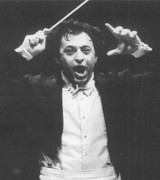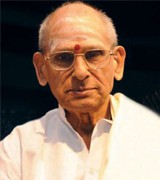COVER STORY
PRIYADARSINI GOVIND - Her greatest role yet
V. RAMNARAYAN

Priyadarsini Govind, the 49-year old Bharatanatyam dancer based in Chennai, has gained from two major influences: Kalanidhi Narayanan, who introduced the expressional aspects of Bharatanatyam to her in her own inimitable style, and Swamimalai K. Rajaratnam, “a dreamer”, whose classes had an other-wordliness about them quite unrelated to the workaday realities of professional dance. He was a musician before he was a dancer, with the resultant aesthetics a special amalgam. She particularly cherishes the memory of the invocation Jaya Suddhapurivasa he sang before every performance. “It took on a special character when he sang,” she recalls.
A reluctant dance pupil as a nine-year old with competing interests, she was often overcome by self-pity and attended SKR’s classes tearfully, but without attracting so much as a raised eyebrow from her guru. He never lost his good humour, Priyadarsini remembers. “When I think of his patience and gentleness, I am eternally grateful to have been guided and nurtured by one of the greatest gurus, who took care not to crush, belittle or stunt the student’s efforts.”
According to Priyadarsini one of the greatest gurus in Bharatanatyam, her Vadyar decried overemphasis or unnecessary aggression in dance. “Be gentle and graceful. This is an art form, not warfare,” he told his wards.
SPECIAL FEATURE
ZUBIN MEHTA - His stint with three great orchestras
MANOHAR PARNERKAR

This is the second and concluding part of my article captioned Zubin Mehta, To the baton born, that appeared as a cover story in the November 2014 issue of Sruti.
The early 1960s saw the emergence of the ‘jet-set’ conductor who could maintain conductorships of two or more major orchestras at the same time. And this he did by jetting between the cities of north America and/ or Europe. (An artistically unwelcome consequence of this development was that many major symphony orchestras started sounding pretty much the same). And this is how early in his career, Zubin Mehta, one of the first of this new breed of jet-set conductors, could hold regular positions simultaneously with three orchestras namely, the Montreal Symphony Orchestra (1961-67), the Los Angeles Philharmonic (1962-78) and the Israel Philharmonic Orchestra (1968 onwards). Zubin Mehta has always been one of the most sought-after in the business. The result: in a career spanning over half a century, the Indian born maestro has appeared on the podiums of nearly every major symphony orchestra and opera house in the world. Of course, the quality and duration of his association with each one of them have always varied greatly – determined by factors like contractual relationships, the degree of his personal and professional involvement, and above all, the success of the arrangement as perceived by important stake-holders/ constituencies like the orchestra owners, the management, the musicians, the media – and more than any other single factor – the audiences.
CENTENARY FEATURE
Tributes to two great artists
V.A.K. RANGA RAO

Of two recent centenary tributes at Chennai, the first was made up of two events – one was Samarpan by Meenakshi Chitharanjan through her institution Kaladiksha at the Music Academy on 1st November 2014, by her and her students. The second was staged by Natyanjali at the Bharatiya Vidya Bhavan, on the 2nd at a morning session, in which Meenakshi participated. Both were tributes to her guru Pandanallur Subbaraya Pillai.
Subbaraya Pillai - A dignified offering
Samarpan was carefully planned to highlight aspects of the venerated guru’s life, teaching and choreography. In the beginning Meenakshi spoke about him, mostly her childhood memories. As was his choreography by my recall, her detailing of his life was as uncluttered. She talked about his father Chokkalingam Pillai and how she came under the son’s tutelage when the father went back to the village in old age.
T. Mukta - Instructive talks
The centenary tribute to T. Mukta, by her student Alarmel Valli, was also paid at two venues; one at the Alliance Francaise and the other at the Pethachi auditorium (8th and 9th November evenings).
TRIBUTE
NEDUNURI KRISHNAMURTHY - A voice with soul
SAMUDRI

Sangita Kalanidhi Nedunuri Krishnamurthy is no more. The veteran exponent of the Pinakapani bani, a role model for young vocalists, was 87 when he passed away at Visakhapatnam in the early hours of Monday, 8th December 2014. He was ailing from lung cancer.
Nedunuri leaves behind an impressive brand of vocalism, exemplified by his prime disciples the Malladi Brothers. His music was soulful, steeped in classicism, and had a lingering quality to it. He was the recipient of several prestigious awards including the Sangita Kalanidhi and the Central Sangeet Natak Akademi award.
With his tremendous work on tuning the songs of Annamacharya, Nedunuri leaves behind a rich legacy of both great singing and devoted academic work.


